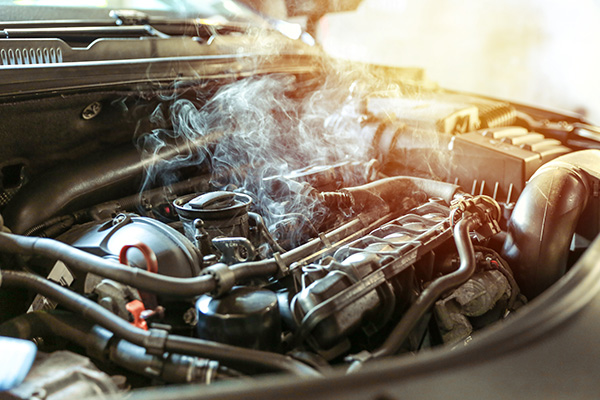
An overheating engine is one of the most serious problems you can encounter on the road. While it can be tempting to keep driving “just a little longer” to reach a safer spot or your destination, doing so can cause catastrophic damage to your vehicle. The truth is, once your temperature gauge rises into the red or you see a warning light, your time to act is extremely limited.
Being aware of why engines overheat, how quickly damage can occur, and what to do when it happens will help you protect your car—and your wallet.
Why Engines Overheat
Engines generate an enormous amount of heat during operation. The cooling system, comprising the radiator, water pump, thermostat, hoses, and coolant, maintains the temperature within a safe range.
Overheating occurs when the cooling system can no longer dissipate heat effectively. Common causes include:
- Low coolant levels from a leak
- A failed water pump
- A stuck thermostat
- A clogged radiator
- Broken or slipping drive belts that power cooling components
Even something as simple as a loose radiator cap can cause overheating.
How Quickly Damage Can Happen
Engines are designed to operate within a very specific temperature range. Once the temperature climbs too high, metal components expand beyond normal tolerances, oil loses its ability to lubricate, and critical seals can fail.
In some cases, serious damage can occur in just a few minutes of driving with an overheating engine. Cylinder heads can warp, head gaskets can blow, and pistons can seize. These repairs can easily cost thousands of dollars—far more than the cost of addressing the original cooling system problem.
Signs You Need to Stop Immediately
If your temperature gauge rises to the red zone, steam is coming from under the hood, or your engine temperature warning light comes on, you need to take immediate action. Other signs include a loss of power, unusual smells from the engine bay, or loud ticking or knocking sounds.
Continuing to drive with these symptoms is a gamble you are likely to lose.
How Long Is “Safe” to Drive
Once your engine is overheating, there is no safe amount of time to continue driving. You may be able to travel a very short distance, at low speeds, to reach a safe stopping point, but even that can be risky.
If you are on a highway, it is better to pull over to the shoulder and shut off the engine than to continue driving at high speeds. In city traffic, find the closest safe place to stop and turn the car off immediately.
What to Do When Your Engine Overheats
Pull over as soon as it is safe, turn off the engine, and pop the hood to allow heat to escape. Do not open the radiator cap while the engine is still hot—coolant is under pressure and can cause serious burns.
Wait at least 30 minutes before checking coolant levels, and only add coolant or water if the engine has cooled completely. In many cases, it is safer to call for roadside assistance rather than attempting to drive further.
Preventing Overheating
Regular maintenance is the most effective way to prevent overheating. This includes checking coolant levels regularly, inspecting hoses for cracks or leaks, and replacing the thermostat and water pump at recommended intervals.
Flushing the cooling system every few years helps remove rust, scale, and contaminants that can block coolant flow. Having your mechanic inspect the radiator and belts during routine service can also catch potential problems before they cause overheating.
The Bottom Line
Driving with an overheating engine is one of the fastest ways to turn a minor repair into a major one. Once the temperature climbs into the danger zone, shut the engine off as soon as possible to prevent permanent damage.
By responding quickly, you can often save your engine and avoid the need for costly repairs.
Cooling System Service at 5 Star Auto Service in Belmont, CA
If your vehicle has overheated or you suspect a cooling system issue, 5 Star Auto Service in Belmont, CA can help. Our technicians can diagnose leaks, replace faulty components, and perform coolant flushes to keep your engine running at a safe temperature.
Schedule your cooling system inspection today and drive with confidence knowing your car is protected from overheating damage.